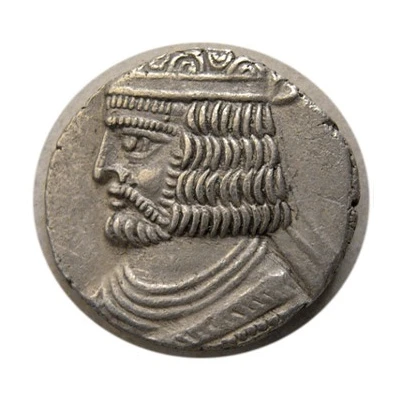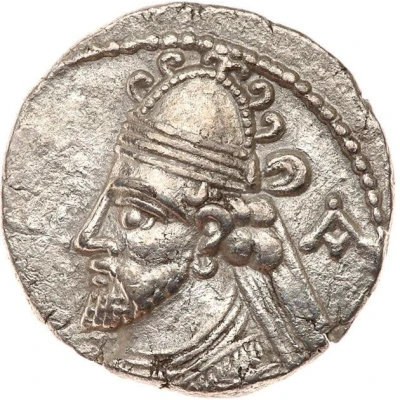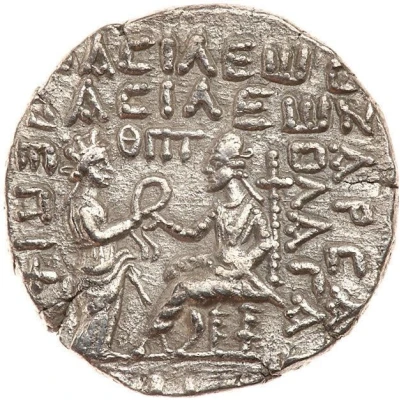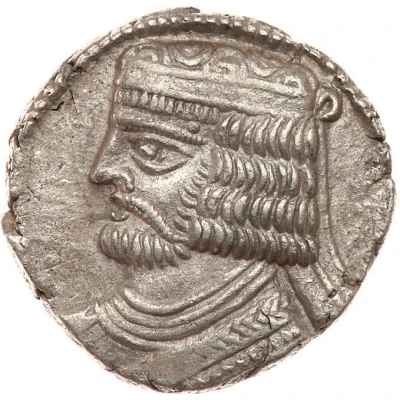
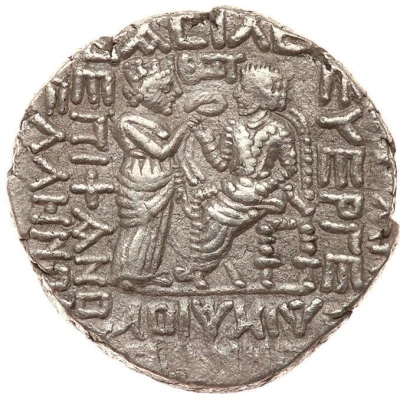

© The New York Sale
Tetradrachm - Vardanes II
369 (57) year| Billon | 14.33 g | - |
| Issuer | Parthian Empire (Parthian Empire (247 BC - 224 AD)) |
|---|---|
| King | Vardanes II (55-58) |
| Type | Standard circulation coin |
| Year | 369 (57) |
| Calendar | Seleucid era |
| Value | Tetradrachm (4) |
| Currency | Drachm (247 BC-224 AD) |
| Composition | Billon |
| Weight | 14.33 g |
| Shape | Round (irregular) |
| Technique | Hammered |
| Orientation | Medal alignment ↑↑ |
| Demonetized | Yes |
| Updated | 2024-10-10 |
| Numista | N#415760 |
|---|---|
| Rarity index | 100% |
Reverse
King seated left, receiving wreath from Tyche standing right, holding sceptre, year above, month in exergue (illegible).
Script: Greek
Interesting fact
One interesting fact about the Tetradrachm - Vardanes II 369 (57) coin from the Parthian Empire is that it features a unique blend of Greek and Persian influences in its design. The coin's obverse side features a portrait of Vardanes II, the ruler of the Parthian Empire from 55 to 57 AD, with a distinctive Persian-style beard and crown. The reverse side of the coin, on the other hand, features a depiction of the Greek goddess Athena, highlighting the cultural exchange and blending that occurred during the Parthian Empire's reign. This fusion of cultural influences is a testament to the diverse and multicultural nature of the Parthian Empire, which spanned across present-day Iran, Armenia, Azerbaijan, and parts of Turkey, Iraq, and Syria.
